2. Components
2.1 Simple translation tool
The Simple translation tool (http://cloud.grammaticalframework.org/translator) is a translator's editor that supports manual and automatic translation. Documents consist of a sequence of segments that are translated independently. The user can import text in the source language and obtain automatically translated text in the target language. Imported text can be segmented based on punctuation. Optionally, one can also use line breaks or blank lines to indicate segmentation in imported text. Text can be edited after it has been imported.
In the image below, the translator chooses the source and target languages and uploads a text in the source language.
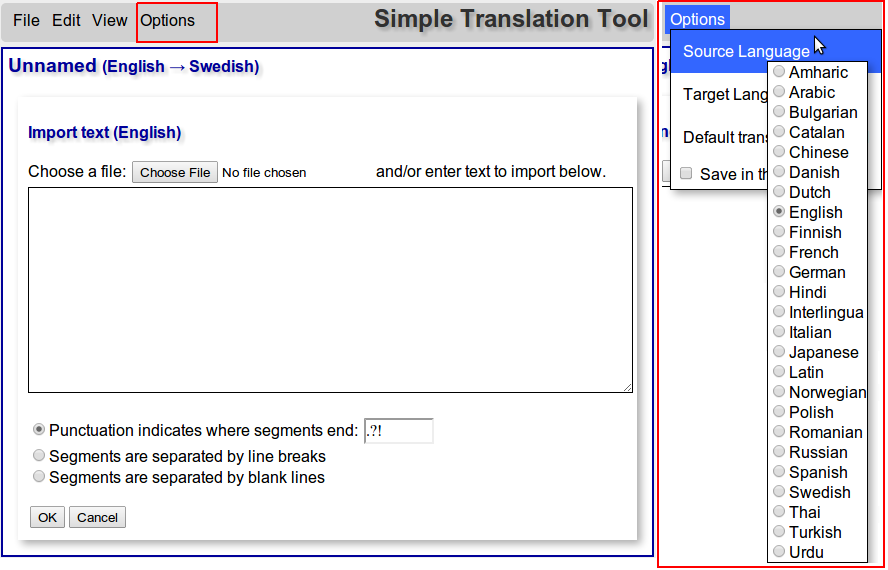
The text can be displayed as parallel texts or segment by segment, as shown below.

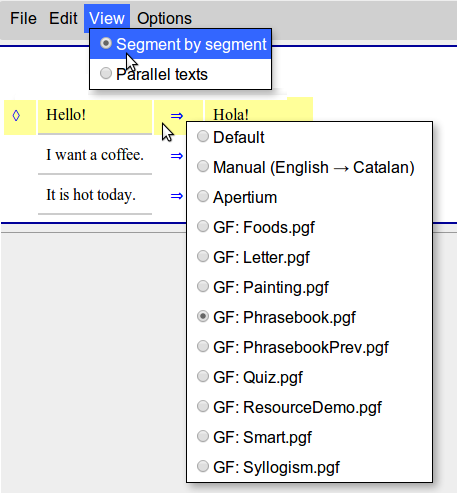
The translator can choose a translation method for the whole document, or when needed, for each segment. The translation methods include various GF grammars, transfer-based machine translation by Apertium and manual translation. Other machine translation options can be added as well. The choice of grammars is shown in the picture above. Choosing a different grammar for different segments is relevant, if the body of the text is unrestricted, but there are passages where precision is required, such as formulas in a patent application. Then the unrestricted text can be translated with a method that has more coverage but less precision, and the formulaic parts with a specialised grammar.
2.2 Syntax Editor
The Syntax Editor (http://cloud.grammaticalframework.org/syntax-editor/editor.html), written by John Camilleri, is a tool for building and manipulating abstract syntax trees in GF.
The image below shows an initial view of the Syntax Editor. The chosen grammar is Phrasebook and the level of the construction is Action; a verb phrase whose tense and polarity are not fixed yet. This excludes some of the possibilities to construct a sentence in Phrasebook, for instance greetings and other fixed phrases.
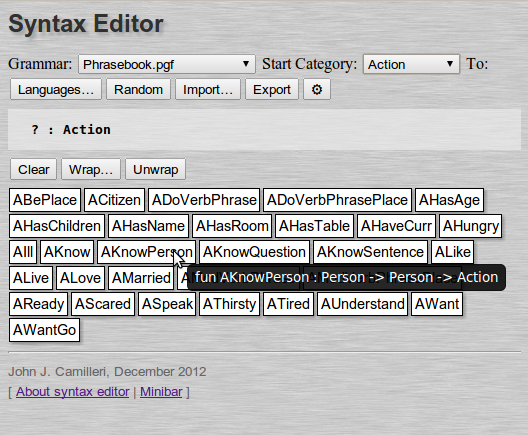
A syntax tree can also be imported as raw text, as shown in the image below.

The editor maintains the structure of the abstract syntax tree (AST) and outputs linearizations in the languages of the concrete syntaxes. In the following three images, the first shows a change of an argument in the AST and the consequent change in the linearizations. Son is changed to a daughter, in English only the word changes, but in French and Bulgarian, changing the gender of the argument also affects the agreement of the possessive pronoun.
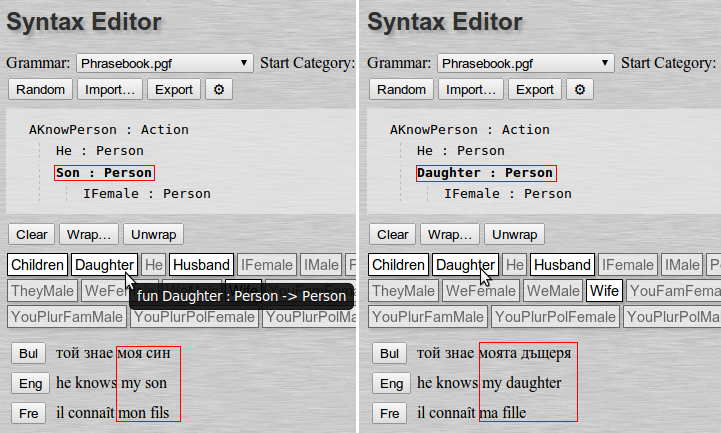
The second image shows the change of the head of the phrase. Both AKnowPerson and ALove take two arguments of type Person, so from the point of view of the AST, they are interchangeable.
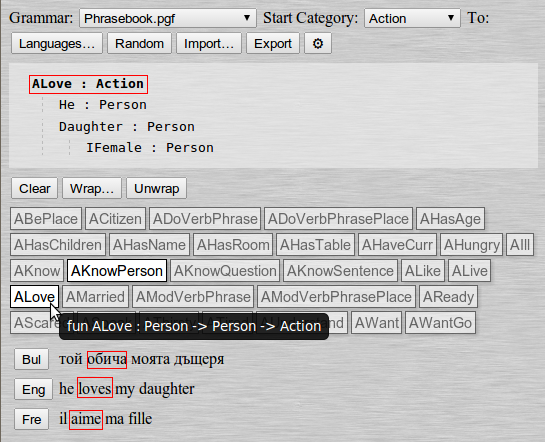
The third image manipulates the polarity of the sentence. As opposed to the previous two examples, this AST is complete, belonging to the start category of the grammar, that is, Phrase.
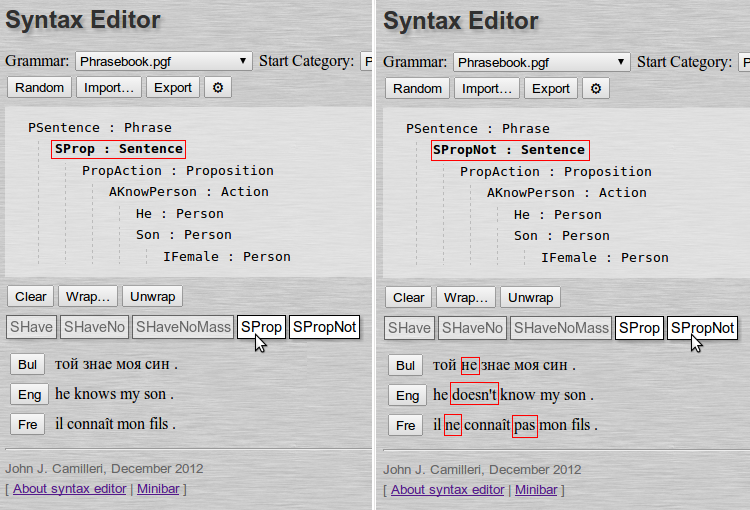
Finally, a tree created or modified in the editor can be exported as raw text.

Future work includes integration to the Simple Translation Tool. Further details about the plans in 4.X.
2.3 Pootle as an example of GF integration
Pootle (http://tfs.cc/pootle LINK TODO) is an open-source translation and project management platform that is completely implemented as a Web service. The platform accepts most of the formats used in translation industry like XLIFF, TMX and PO.
Integration of GF into Pootle
Pootle has a support for both standard translation memories and machine translation. Google Translate and Apertium MT systems are available in the standard installation, and Web server queries to other MT systems can be sent by modifying the source code of Pootle. GF translation via GF Web API has been added to the Pootle translation environment as a proof of concept.
Unlike Google Translate and Apertium which only require the translatable segment and the source and target language codes as input, the GF system also needs the name of the resource grammar(s) to be used. The selection of the grammar has been added to the Pootle project administration dialog, where the project manager normally selects the languages, file formats, translation memories and other resources to be used:
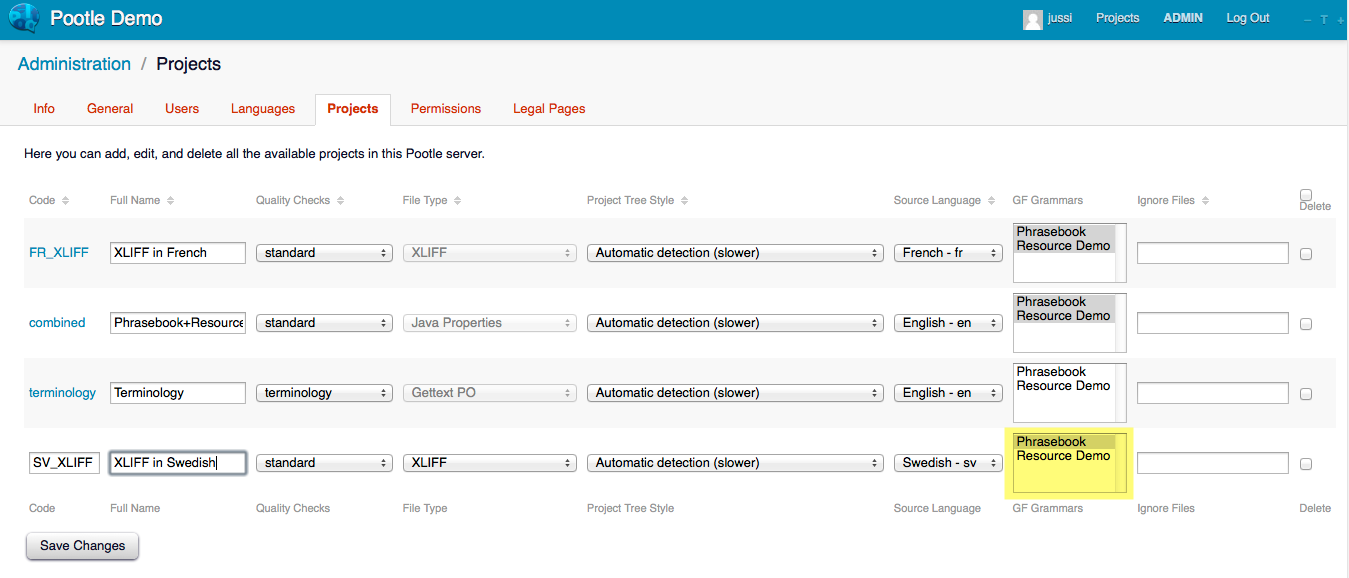
The translator user interface shows the buttons for different MT systems above the edit box (GF, Google and Apertium buttons are seen on the screenshot below).
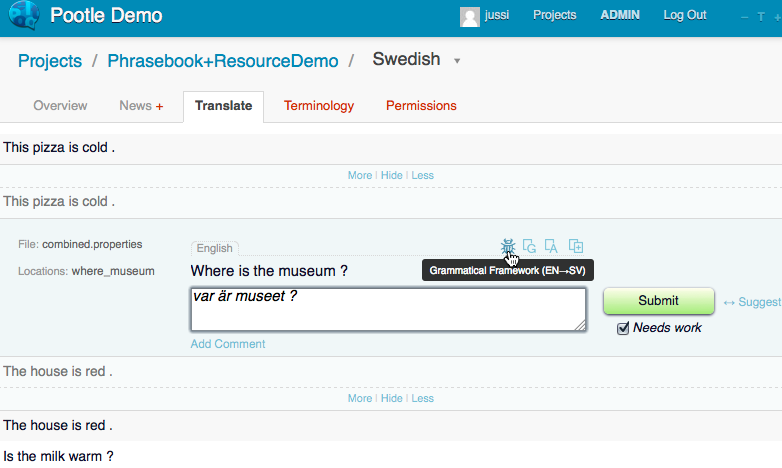
When the GF button is clicked, the web browser sends the source segment to the GF server, which parses and linearizes it into the target language using the given grammar(s). The translated text is then sent back to the browser. The translation suggestion can then be edited, after which the segment is added to the project translation memory.
This illustrates that the GF translation system can be relatively easily added into various translation editing applications via the Web API. The GF Web API can be modified to comply with any standard Web API like the one proposed by TAUS (https://tauslabs.com/interoperability/taus-translation-api)
- Printer-friendly version
- Login to post comments
- Slides
What links here
No backlinks found.


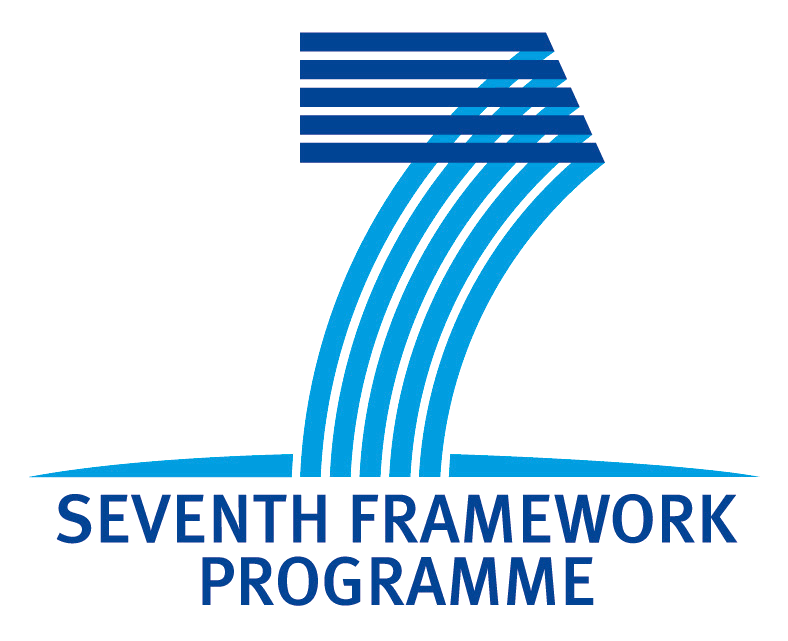
Comments
GlobalSignt user management
I think it is misleading to mention ontologies in the context of how GS manages user roles. Is this our contribution? Even if this was done, this has to do with a customization of a system for an aspect which is related to the translation workflow but does not involve directly the tools developed by the project.
Please concentrate on the integration aspects of various components developed by the project.
If you want to discuss the workflow, do it in relation to what was discussed in D9.1.